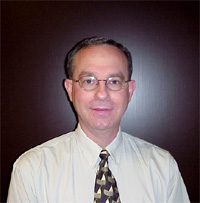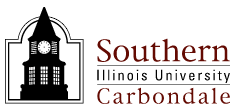Radiologic-Technology Programs
Thank you for your inquiry regarding training for x-ray technologists. Vanderbilt does not have a general radiography technology program; however, we have affiliations with local hospitals, community colleges and universities who are accredited by the Joint Commission on Education in Radiologic Technology (JCERT) and the American Registry of Radiologic Technologists (ARRT). Their students complete clinical components of their education at Vanderbilt by affiliation agreements. Austin Peay State University (listed below) offers a bachelor's degree in medical imaging.
For more information, please contact:
 |
HOSPITAL BASED CERTIFICATE PROGRAM Nashville General Hospital at Meharry Kenneth W. Jones, MEd, RT(R) Radiography Program Director (615) 341-4440 Application |
 |
B.S. DEGREE PROGRAM Austin Peay State University Rex Ameigh, MSLM, BSRT (R) Director, Radiologic Technology Program (931) 221-7791 Application |
|
|
ASSOCIATES DEGREE PROGRAM Volunteer State Community College |
MRI/CT technology Program
Vanderbilt University Medical Center’s Department of Radiology and Radiological Sciences is affiliated with Southern Illinois University at Carbondale, Illinois and serves as a clinical site for the Advanced Imaging MRI/CT Technology Program. Please direct all questions concerning the program and admission to:
|
|
Southern Illinois University |
What is Magnetic Resonance Imaging (MRI)?
Magnetic resonance imaging (MRI) is a procedure that uses radio waves, a magnetic field, and a computer to produce images of the body tissues. It can be used to image many parts of the body, such as the brain, optic nerves, brainstem, spine, heart, abdomen, pelvis, musculoskeletal (muscles and joints), and blood vessels.
What is Computed Tomography (CT)?
Computed tomography (CT) is a procedure that uses ionizing radiation and a computer to produce cross-sectional images of the body. It can be used to image many parts of the body, such as the brain, facial bones, neck, spine, chest, abdomen, and pelvis. This procedure also plays a vital role in diagnosing trauma patients.
What does a magnetic resonance imaging or computed tomography technologist do?
A magnetic resonance imaging and computed tomography technologist is a highly-skilled professional who uses specialized equipment (MRI unit or CT scanner) to create images of structures inside the human body that are used by physicians to make a medical diagnosis. MRI and CT technologists have extensive, direct patient contact and may inject the patient with a contrast agent that assists in visualizing various anatomical structures. They must be able to interact compassionately and effectively with people who range from healthy to critically ill.
What are the technical and physical aspects expected of MRI and CT technologists?
Prior to becoming a MRI technologist, one must be thoroughly screened for any contraindication that could be dangerous to that person by qualified personnel before being exposed to the static, gradient, or radiofrequency electromagnetic fields of the MRI system. MRI and CT technologists should be able to:
- Lift more than 50 pounds routinely
- Push and pull routinely
- Bend and stoop routinely
- Have full use of their extremities
- Distinguish audible sounds
- Adequately view MR and/or CT images
- Interact compassionately and effectively with the sick or injured
- Assist patients on and off patient couch
- Communicate effectively with patients and other health care professionals
- Organize and accurately perform the individual steps in a MRI procedure in the proper sequence.
- Perform venipuncture procedures
What are the career opportunities?
Magnetic resonance imaging and computed tomography technologists can choose to work in clinics, hospitals, out-patient facilities, and other medical settings performing examinations in their areas of specialization. Career advancement opportunities exist in education, administration, research, and medical imaging corporations. Salaries for MRI and CT technologists are competitive with technologists in the medical imaging areas, however, they may vary depending on geographical location.
How do I become a MRI or CT Technologist?
The Magnetic Resonance Imaging and Computed Tomography specialization option is offered during the 4th year in the Radiologic Sciences B. S. degree (see course sequence).
This specialization emphasizes the physics, technology, instrumentation, sectional anatomy, and pathologies common in MRI and CT. Upon completion of the program the student will be prepared to challenge the national registry examinations offered by The American Registry of Radiologic Technologists. Technologists employed in these specialty areas will be supervised by a board certified radiologist, but will be afforded a greater amount of responsibility and independence in the performance of their duties.
Because of a variety of circumstances, including rules of accreditation, limitations of facilities, and faculty-student ratio, they are limited to a specific number of students whom are chosen, by a process of selection, for admission to the program. Review of completed applications will begin in mid-January. Admission to the program will close when all positions in the class are filled.


